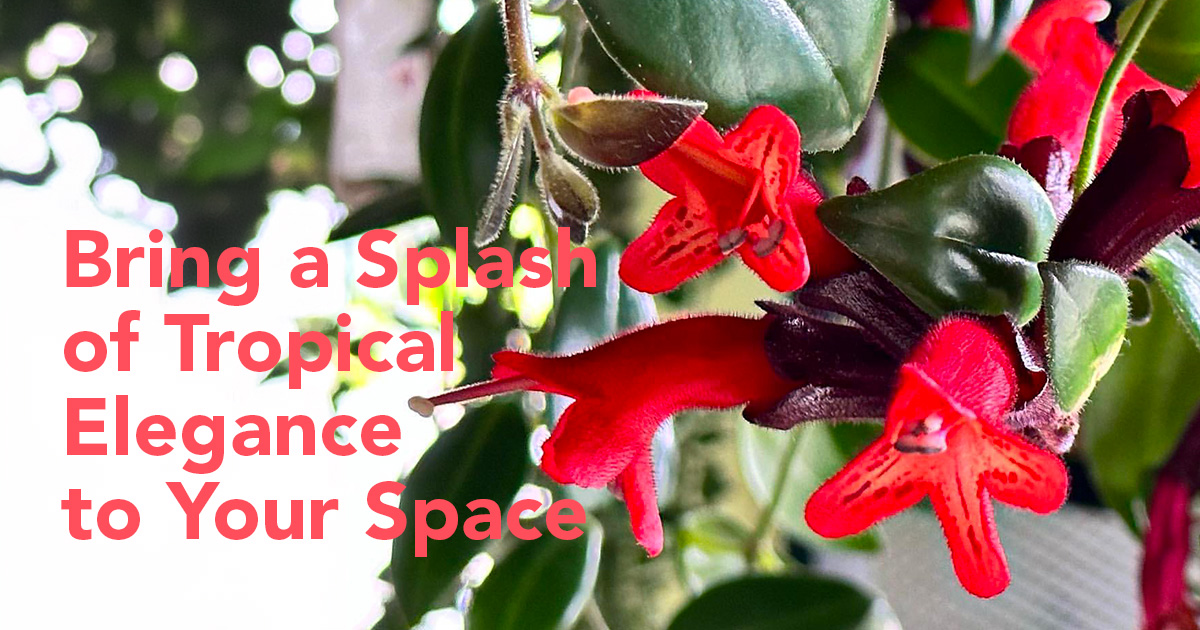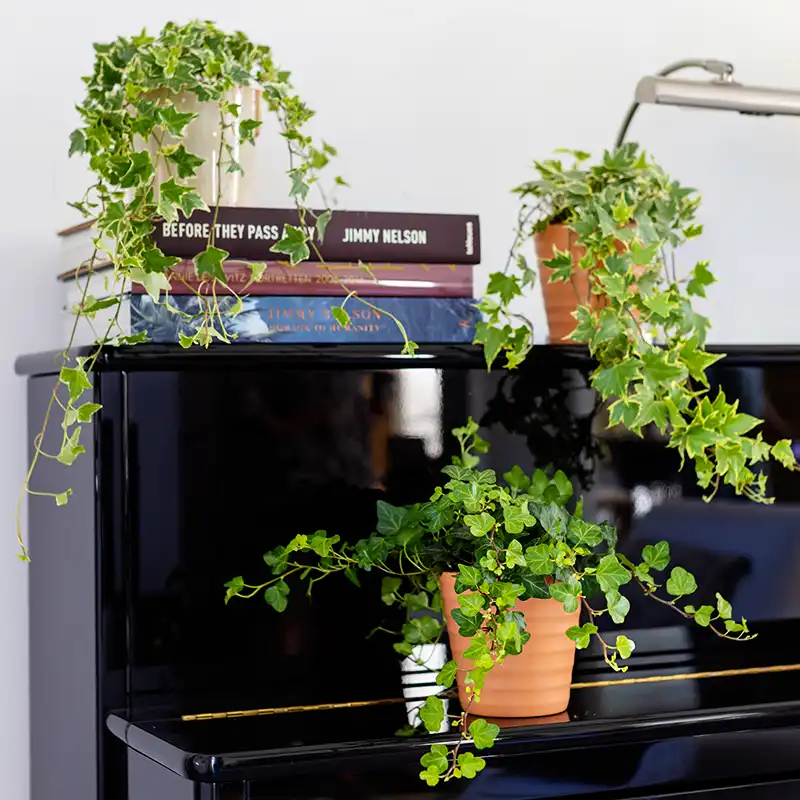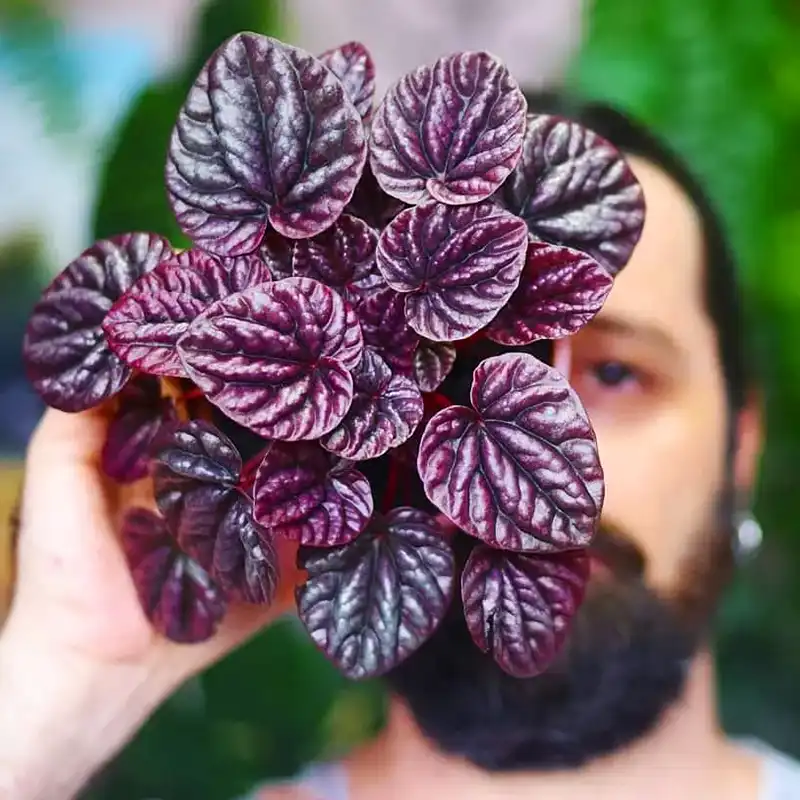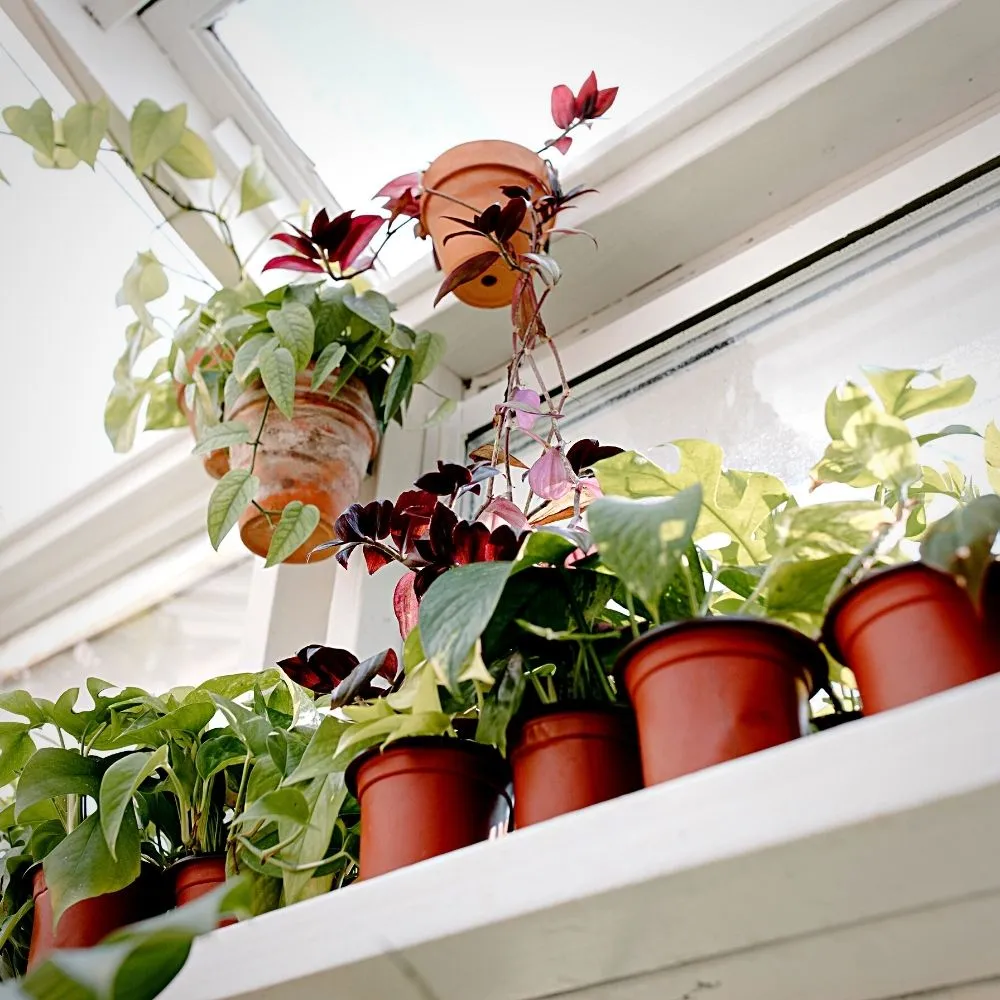Have you ever seen something like it? This plant is rightly called the Lipstick Plant. Botanical connoisseurs scientifically know this as Aeschynanthus radicans. Most people just remember this striking perennial for its green or purple, waxy leaves, and its tubular red, orange, or yellow flowers resembling a lipstick tube.
The Lipstick Plant's Origin and Symbolism
Lipstick Plants hail from the tropical rainforests of Southeast Asia, where they grow as epiphytic species in the lush canopies. Their native habitat provides high humidity and filtered sunlight, conditions that are key to their successful cultivation in homes around the world. The Lipstick Plant symbolizes beauty and vibrancy, often associated with confidence and charm due to its striking appearance and bold blooms.
Why do many people find this plant so adorable? There are several reasons for this. First, its cascading vines adorned with vivid, tubular flowers bring a splash of tropical elegance to any space. Second, the unique appearance of the blooms, resembling a tube of lipstick, adds a whimsical touch to its aesthetic appeal. And third, the Lipstick Plant thrives in hanging baskets or cascading off shelves, reaching lengths of up to 1 meter, without significant leaf drop, making it instantly decorative. All these attributes add more to the favoritism that a lipstick plant receives, equally from a master gardener and a novice alike.


Varieties of Lipstick Plants
Fun fact: did you know many people mistake a non-blooming Aeschynanthus radicans for a Hosta? Once it starts flowering it becomes clear that this is really a Lipstick Plant. These are 10 of the most popular Lipstick Plant varieties to choose from:
- Aeschynanthus Mona Lisa: Mona Lisa is a showstopper, probably the most popular Lipstick Plant in the world. This popularity stems from its striking dark green, glossy leaves paired with vibrant red-orange flowers, making it a standout choice for many plant enthusiasts. Its prolific blooming habit ensures a bright display throughout the growing season, making it a favorite for hanging baskets and indoor plant displays, or for your early spring patio. The Mona Lisa Lipstick Plant is highly regarded for its ease of care and stunning visual appeal, making it a top choice for both novice and experienced gardeners.

- Aeschynanthus Black Pagoda: This plant features uniquely mottled leaves with shades of purple, green, and yellow, adding an exotic touch. Its green and yellow blooms complement the foliage, creating a striking contrast. The Black Pagoda Lipstick plant is ideal for plant enthusiasts looking for something out of the ordinary.

- Aeschynanthus Curly: With its wavy, smooth leaves and bright red flowers, Curly adds both texture and color to any space. The Curly Lipstick Plant's leaves create an interesting visual effect, making it a favorite among plant collectors. It thrives in hanging baskets, where its foliage can spill over the edges beautifully.

- Aeschynanthus Rasta: Known for its densely twisted, curly leaves and bright red blooms, Rasta is a dramatic and eye-catching variety. The unique foliage adds a touch of whimsy to its appearance. This plant is perfect for those looking to add a bold statement piece to their home.

- Aeschynanthus Twister: Characterized by its twisted, corkscrew-like leaves and vibrant red flowers, Twister is a unique and striking plant. The unusual leaf shape of this twisted Lipstick Plant creates a dynamic look that draws attention. It is a great choice for adding an interesting texture to plant displays.

- Aeschynanthus Variegata: This one features green leaves variegated with shades of yellow, white, or cream, providing visual interest even when not in bloom. Its red flowers add a pop of color, making it a striking addition to any collection. The variegated Lipstick Plant is particularly popular for its beautiful foliage.

- Aeschynanthus Hot Flash: This Lipstick Plant variety is known for its bold red flowers and slightly more compact growth habit. It is perfect for smaller spaces where its intense blooms can be fully appreciated. Hot Flash is easy to care for and provides a continuous display of color.

- Aeschynanthus Caroline: The Caroline variety features dark green, glossy leaves, and vibrant red, tubular flowers that resemble a tube of lipstick. This one is known for its easy care and ability to bloom profusely, making it an excellent choice for both novice and experienced gardeners. Perfect for adding a touch of tropical beauty to any indoor space.

- Aeschynanthus Big Apple: This Lipstick Plant boasts larger flowers and leaves compared to other types, with a robust growth habit. Its deep red blooms are particularly striking and make a bold statement. This variety is ideal for those looking to add a substantial and vibrant plant to their collection.

- Aeschynanthus Tangerine: This variety is also known as the basket plant or Lipstick Orange. Tangerine produces warm yellow-orange flowers that stand out against its green leaves. Precisely why it is loved for its cheerful looks that bring a touch of summer indoors or on terraces and patios. It is easy to care for and makes a great addition to any plant collection.

How to Propagate and Care for a Lipstick Plant
Its relatively low-maintenance nature makes Aeschynanthus an excellent choice for both novice and experienced gardeners. The plant's resilience and adaptability to indoor environments mean that with minimal effort, it can thrive and continue to bloom throughout the year. This combination of beauty, ease of care, and continuous flowering makes the Lipstick Plant a favorite among houseplant aficionados.
Lipstick Plant Care - Soil Requirements
Use a well-draining potting mix with perlite and sand to prevent root rot. This potting soil mixture mimics its natural environment and ensures adequate airflow around the roots.
Lipstick Plant Care - Temperature Needs
The ideal range is 18-24°C (65-75°F). Avoid exposing the plant to drafts or sudden temperature changes, which can stress it. During the winter months, make sure the temperature falls gradually to prevent shock and leaf drop.
Lipstick Plant Care - Light Requirements
Needs bright, filtered light. Avoid direct sunlight to prevent leaf burn. A spot near an east or north-facing window is often ideal. If the leaves start to pale, they may need more light.

Watering Needs of a Lipstick Plant
Keep the soil moist but not soggy. Water thoroughly, then let the top few inches dry out between waterings. Consistent moist is key, because overwatering can lead to root rot, so ensure proper drainage.
Humidity Required for Lipstick Plant Growth
The Lipstick Plant prefers high humidity levels, typical of its native habitat in tropical regions. Use a humidifier, place it in a naturally humid room (like a bathroom), or set the pot on a tray of pebbles filled with water. Regular misting the plant can also help maintain higher humidity, but avoid soaking the leaves.
Fertilizing Your Lipstick Plant
Feed twice a month during the growing season (spring through early fall) with a balanced, water-soluble fertilizer diluted to half strength. This helps promote healthy growth and vibrant blooms. Using liquid fertilizer ensures the nutrients are quickly absorbed by the plant.
Lipstick Plant - Repotting
Repot when the plant becomes rootbound, typically every 2-3 years. Choose a slightly larger pot and refresh the soil to provide new nutrients.

Propagating Lipstick Plants
Propagate by taking 4-6 inch cuttings from healthy stems. Remove the lower leaves and place the cuttings in water or moist potting mix until roots develop. Once rooted, transfer to a small pot with well-draining soil.
Pruning Lipstick Plants
Regular pruning encourages bushier growth and helps maintain a desirable shape. Trim back leggy vines with sharp pruners and remove any dead or yellowing leaves. Pruning can also stimulate more prolific blooming.
Common Pests and Plant Diseases Vulnerability of Lipstick Plants
Generally pest-free, but watch for aphids, mites, and mealybugs. If detected, treat with neem oil or insecticidal soap. Fungal issues can arise from overwatering; ensure proper drainage and reduce watering frequency if necessary.
Lipstick Plant - Pet Safe Choice
The Lipstick Plant is non-toxic to pets and humans, making it a safe choice for homes with curious animals or small children. So go ahead, let your cat have a go at this plant!
Combining with other plants is also a piece of cake. The Lipstick Plant mixes and matches with practically any tropical epiphyte, basket vine, or hanging plant.

Enjoy Your Lipstick Plant Blooming
Summarized, you can enjoy your Aeschynanthus radicans to the max and encourage its flowering by ensuring the plant receives adequate light, consistent watering, and regular feeding. Cooler temperatures and reduced watering during winter can help set the stage for a prolific spring bloom. Pruning spent flowers can also promote further blooming.
Have fun pruning, growing, maintaining, watching, and — above all — loving your Lipstick Plant!
Header image by @showa_6channel.








